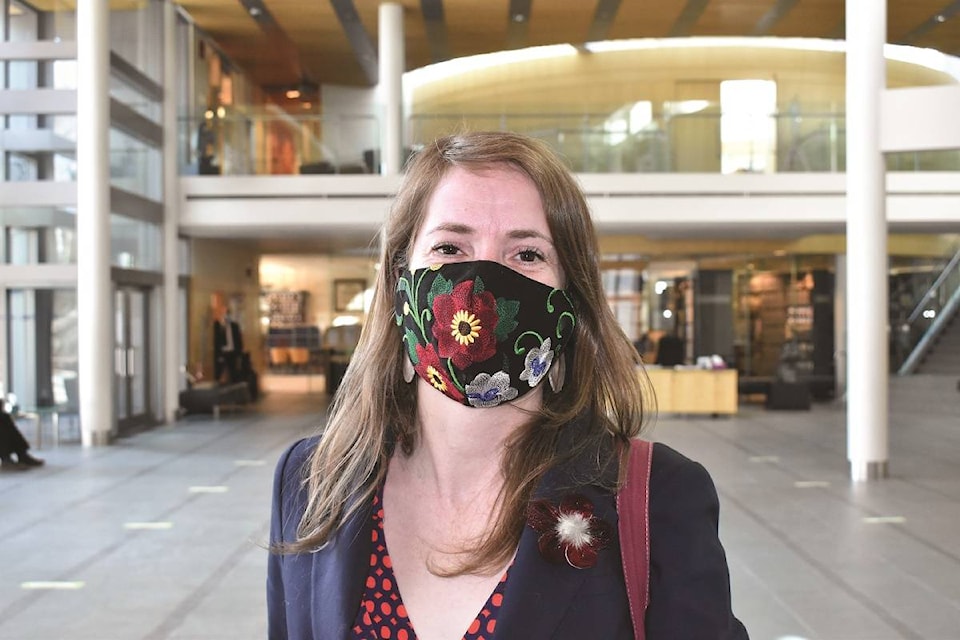Clare’s Law, a new regulation on the books south of 60 could offer safety supports for people in the NWT facing risks of intimate partner violence.
Great Slave MLA Katrina Nokleby floated the idea of the NWT adopting the law in the legislative assembly on June 4.
Pointing to a 2019 report from Statistics Canada that showed the NWT has the second highest rate of family violence in Canada, behind Nunavut, Nokleby said that if potential victims of violence in the territory could access useful information about their partners, they could make informed choices about their safety.
READ MORE: Family Violence in Canada: A statistical profile, 2019
Known in Alberta as the Disclosure to Protect Against Domestic Violence Act, Clare’s Law empowers potential victims to apply for police information on a partner’s history of domestic violence. It came into force in Alberta in April, 2021 and in Saskatchewan one year ago.
The law was named after Clare Wood, a woman in England was who murdered in 2009 by her former partner, a man who had a history of intimate partner violence.
RELATED REPORTING: Alberta brings in Clare’s Law to allow access to intimate partner’s violent history
READ MORE: Saskatchewan Is The First Province In Canada To Implement “Clare’s Law”
“I urge this government to work harder on improving this situation for our people and we can start by adopting Clare’s Law,” Nokleby said.
Caroline Wawzonek, Minister Responsible for the Status of Women responded that the NWT has no equivalent law, and she didn’t commit to trying to adopt it, but said that “what we can do to fundamentally empower women in those situations is really the discussion to be had.”
Applicants can seek information from the police on their partners related to histories of domestic violence, stalking or harassment, breaches of no contact orders and similar acts, according to a Government of Alberta document.
READ MORE: Disclosure to Protect Against Domestic Violence Act
Police can approach an individual if they have reason to believe someone is at risk of violence, or people can apply for that information. The person of disclosure will not be informed about an application.
Applicants can apply online but must provide full personal details in the application and be willing to meet with police in person.
Information is only shared verbally and cannot be written down, recorded with video or audio, shared on social media, told to someone else or used for any legal proceedings.
Applications won’t be accepted if the applicant hasn’t met the person of disclosure in person, can’t provide a valid reason for the application or wants to use the information for malicious intent. Child custody hearings, divorce proceedings and other court processes are also unacceptable purposes for applications.
The first application step is done online and the information is screened electronically and sent to the provincial government, who requests information on the person of disclosure from law enforcement. Police confirm key information of the application based on the eligibility criteria.
It is sent back to the government to determine if the application is eligible for disclosure. The government might request more information from the applicant or seek out social supports if requested. A risk assessment ranging from low to medium to high is conducted. Higher levels indicate likelihood of violence and a greater need for safety.
When risk is deemed low, police can disclose information to applicants over the phone. When the risk is moderate or high, disclosure can only be done in person at a police station or another location.
The final step is disclosure to the applicant.
In the two-and-a-half months since it was enacted, Clare’s Law has helped people who previously were reluctant to access social services come forward and engage, said Carrie McManus, directors of innovation and programs at the Sagesse Domestic Violence Prevention Society in Calgary.
Sagesse is the front-line organization for the social service response component of the new law.
About 150 Clare’s Law applications have been filed with the police. Of those, around 40 per cent of applicants decided to use the new information to seek out social services, McManus said.
“We have high interest in Clare’s Law in Alberta. The levels of engagement are much higher than we anticipated.”
One pathway through Clare’s Law to social services is its risk assessment function which can connect people with shelters or community organizations, or specialized services for refugees, Indigenous people and members of the LGBTQ2+ community.
